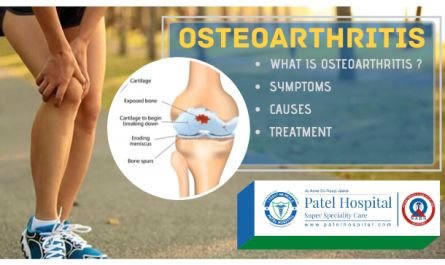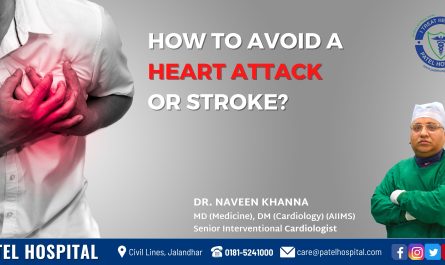What is In Vitro Fertilization?
Infertility is a disease or dysfunction of the reproductive system defined by the failure of regular unprotected intercourse. Infertility does not claim an individual’s life, it inflicts devastating emotional trauma on the couple.
Infertility was once considered as women’s problem, but the modern concept of the etiology of infertility connotes equal responsibilities to both partners. The causes of infertility hence are complex and multiple. The investigation of the infertile couples must begin with adequate history taking and physical examination of both partners.
Clinical evaluation of infertile couples may be grouped into
- Clinical evaluation
- Semen analysis
- Ovulation monitoring
- Assessment of tubal patency
- Tubal peritoneal defects
Based on the findings of these four basic investigations, all infertile couples can be broadly categorized into three groups
- Single defect in one of the partners.
- Multiple defects in one or more partners.
- Apparently no defects in ether partner (unexplained infertility).
ART provides a valuable treatment option for selected couples with a low probability of natural conception.
Clinical Examination:
- Ovarian reserve testing. To determine the quantity and quality of your eggs, your doctor might test the concentration of follicle-stimulating hormone (FSH), estradiol (estrogen), and anti-mullerian hormone in your blood during the first few days of your menstrual cycle. Test results often used together with an ultrasound of your ovaries, can help predict how your ovaries will respond to fertility medication.
- Semen analysis. If not done as part of your initial fertility evaluation, your doctor will conduct a semen analysis shortly before the start of an IVF treatment cycle.
- Infectious disease screening. You and your partner will both be screened for infectious diseases, including HIV.
- Practice (mock) embryo transfer. Your doctor might conduct a mock embryo transfer to determine the depth of your uterine cavity and the technique most likely to successfully place the embryos into your uterus.
- Uterine exam. Your doctor will examine the inside lining of the uterus before you start IVF. This might involve a sonohysterography — in which fluid is injected through the cervix into your uterus — and an ultrasound to create images of your uterine cavity. Or it might include a hysteroscopy — in which a thin, flexible, lighted telescope (hysteroscope) is inserted through your vagina and cervix into your uterus.
IVF involves several steps — ovarian stimulation, egg retrieval, sperm retrieval, fertilization and embryo transfer. One cycle of IVF can take about two to three weeks, and more than one cycle may be required.
The treatment will begin with synthetic hormones to stimulate your ovaries to produce multiple eggs — rather than the single egg that normally develops each month. Multiple eggs are needed because some eggs won’t fertilize or develop normally after fertilization.
You may need several different medications, such as:
- Medications for ovarian stimulation. To stimulate your ovaries an injectable medication containing a follicle-stimulating hormone (FSH), a luteinizing hormone (LH) or a combination of both are injected to the patient. These medications stimulate more than one egg to develop at a time.
- Medications for oocyte maturation. When the follicles are ready for egg retrieval — generally after eight to 14 days — human chorionic gonadotropin (HCG) or other medications are injected to help the eggs mature.
- Medications to prevent premature ovulation. These medications prevent the body from releasing the developing eggs too soon.
- Medications to prepare the lining of your uterus. On the day of egg retrieval or at the time of embryo transfer, progesterone supplements are advised to make the lining of your uterus more receptive to implantation.
To determine when the eggs are ready for collection, the following examinations are done:
- Vaginal ultrasound, an imaging exam of ovaries to monitor the development of follicles — fluid-filled ovarian sacs where eggs mature.
- Blood tests, to measure the response to ovarian stimulation medications — estrogen levels typically increase as follicles develop, and progesterone levels remain low until after ovulation.
There are five basic steps to IVF:
Step 1: Stimulation, also called super ovulation which is already discussed in detail.
Step 2: Egg retrieval and semen preparation:
- The eggs are retrieved from female ovaries through the transvaginal technique know as transvaginal oocyte retrieval, involving an ultrasound-guided needle piercing the vaginal wall to reach the ovaries
- Through this needle, follicles can be aspirated and the follicular fliud is passed to the embryologist to identify ova.
- Usually takes 20-40 minutes.
- In the meantime, semen is prepared for fertilization by removing inactive cells and seminal fluid in a process called semen washing.
- It is of two types –
Single washing
Double density gradient
- If semen is being provided by a sperm donor, it will usually have to be prepared for treatment before being frozen and quarantined, and it will be thawed ready for use.
Step 3: Insemination and Fertilization
- Prepared semen is placed together with the best quality oocytes. The mixing of the sperm and oocyte is called insemination.
- Oocytes and sperm are then stored in an environmentally controlled chamber. The sperm most often enters (fertilizes) an egg a few hours after insemination.
- If the chance of fertilization is low, the sperm may be directly injected into the egg. This is called intracytoplasmic sperm injection (ICSI).
Step 4: Embryo culture
- When the fertilized egg divides, it becomes an embryo. Laboratory staff will regularly check the embryo to make sure it is growing properly. Within about 5 days, a normal embryo has several cells that are actively dividing.
Step 5: Embryo transfer
- Embryos are placed into the woman’s womb 3 to 5 days after egg retrieval and fertilization.
- The procedure is done in the OT while the woman is awake. The doctor inserts a thin tube (catheter) containing the embryos into the woman’s vagina, through the cervix, and up into the womb. If an embryo sticks to (implants) in the lining of the womb and grows, pregnancy results.
- Unused embryos may be frozen and implanted or donated at a later date.
For more information or any query, call us at – 9216284444 / 0181-5241000 or reach us at care@patelhospital.com
Our IVF Expert: Dr. Ramandeep Kaur, MBBS, MD (Obs & Gyn),
Consultant Obstetrician, Gynaecologist & Infertility Specialist,
7 Years of experience, 7000+ Delivery Experience
Best IVF & Fertility Centre in Jalandhar, Punjab | IVF Expert in Jalandhar Punjab | Infertility Treatment in Jalandhar, Punjab



